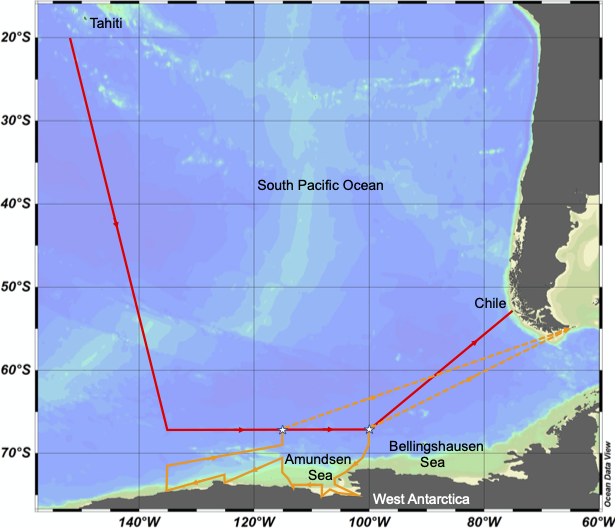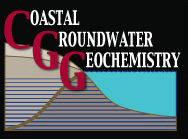GEOTRACES: South Pacific Ocean GP17 OCE-ANT
The goal of the GEOTRACES program is to “identify processes and quantify fluxes that control the distribution of trace elements and isotopes (TEIs) in the ocean and to establish the sensitivity of these distributions to changing environmental conditions”. This ambitious objective requires coordinated cruises that measure multiple “core” TEIs (e.g. Fe, Mn, Al) across key gradients in the ocean. Now entering its third decade, GEOTRACES has logged over 50 section cruises and process studies, greatly increasing our understanding of the oceanic distributions and inventories of important trace metals. However, these comprehensive global concentration maps of biologically important metals like iron cannot be properly interpreted or modeled without concurrent measurement of tracers capable of providing rates of internal TEI cycling processes and fluxes at boundaries and across interfaces.
To this end, radium isotopes (224Ra, 223Ra, 228Ra, 226Ra) are a quartet of sediment-sourced radionuclides that are relatively unreactive in seawater and have half-lives that range from days to centuries. In GEOTRACES and other TEI-focused process studies, the versatility of Ra isotopes has led to important source information and time-scale context to trace metal concentration data. For example, 228Ra (t1/2=5.75 y) has proven to be an ideal shelf-flux tracer for quantifying basin-scale submarine groundwater discharge (SGD; Kwon et al., 2014; Charette et al., 2015; Rodellas et al., 2015) and TEI inputs from ocean margins (Charette et al., 2016). This radium isotope has also been used to estimate lateral TEI fluxes from slope sediments in the South Pacific Ocean (Sanial et al., 2018). Radium-226 (t1/2=1600 y) provided insight on deep-sea sediments as a source of TEIs to the benthos (Le Roy et al., 2018), as well as the residence time of deep-waters in the Arctic Ocean (Kipp et al., 2019; Rutgers van der Loeff et al., 2018). The short-lived Ra isotopes, 224Ra and 223Ra, with half-lives of 3.66 and 11.4 days, respectively, were used to measure the time-scales of near-field hydrothermal plume processes along the Mid-Atlantic Ridge and East Pacific Rise (Kipp et al., 2018). These and other TEI rates and fluxes derived from Ra isotopes will be central to global modeling efforts at the completion of GEOTRACES.
Motivation
The main motivation of the proposed research is to utilize the quartet of Ra isotopes to enable source identification and flux quantification of GEOTRACES TEIs in the South Pacific Ocean, the Pacific sector of the Southern Ocean, and the Amundsen Sea along the Antarctic continental margin. Concurrent measurement of the four Ra isotopes will allow us to address several key questions related to ocean margin and benthic boundary processes and their role in supplying and transporting TEIs to marine ecosystems.
More info to come

Partners/Collaborators
- Willard Moore

